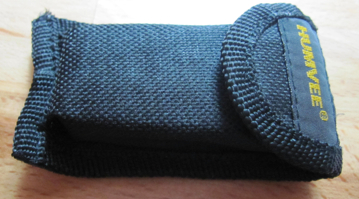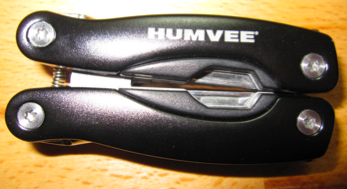-
Time or money (or quality just isn't there)
Several months ago, my wife and I bought our son a Tonka Mighty Motorized Garbage Truck
from Costco to give him for Hanukkah as he's a bit scared of the garbage truck coming down the street and we thought that this could help him. We gave him the truck last night and within 5 minutes, the lifting mechanism stopped working. My wife got new batteries as it shouldn't like the motor was dying, but that didn't help. After a few online searches, my wife saw many horrible reviews of this product with the same problem.
I told our son that I'd try to fix it after he went to sleep. Well, it has triangular shaped screws which made it a bit hard to take apart. However, a small flat head screwdriver seemed to fit and turned the screws. I disassembled the entire truck and found the problem. One of the gears wasn't firmly attached to the metal shaft. I used some super glue to glue it onto the shaft and presto, it started working again. Yeah! However, this little repair job took over 2 hours! Tonka doesn't make toys like they used to, so the $20 we spent on the toy was topped off with 2 hours of repair work making the toy a lot more expensive than $20.
Our son was delighted that his garbage truck was working again. He probably has one of the only Tonka garbage trucks that is still working. While it is still early, I'm crossing my fingers that my repair job worked.
We, as a society, keep demanding lower prices on products, but in a lot of cases are willing to accept poor quality.
Note, it appears that Tonka has licensed its name to a company called Funrise Toys. That's too bad because I always thought that Tonka trucks were well built.
-
Imprinting a signature in a PDF
The other day I needed to put my signature on a PDF, so I used PDFPen to do so, but noticed that I could still move the signature even after saving it and tried to use the "Merge Imprint into Page" option, but found that it didn't work either (their support confirmed that due to changes in PDFs, this feature was kind of useless and should be removed). My solution was to print out the PDF and scan it back in; my signature was definitely imprinted on the PDF as the entire PDF was a bitmap image. I kind of forgot about this until today.
I heard about the TSA document leak on the news and searched for it. Wired had a lot of information including a link to a document that explains how to properly redact information. The basic idea is to save the PDF as a multi-page TIFF, then convert the TIFF to a PDF. While PDFPen, this is easy:
- Open PDF in PDFPen.
- Add signature and other information that you don't want editable.
- Save PDF as TIFF.
- Open TIFF in PDFPen (or Preview).
- Save file as PDF.
Presto! Now the PDFPen folks just need to adds this as an option to eliminate the steps. I realize that this significantly increases the file size, but it does accomplish my goal.
-
Unhelpful error of the day
I was working in Quicken today and decided to online enable some of my accounts as I've never done that before. I am using Quicken 2007 for the Mac and have applied the latest "update" (update is in quotes for reasons that will become clear soon.
I checked my bank for the FAQ on what to use as the username and finally found a reference on the web (the bank was no help) and knew I had that correct, but Quicken kept giving me a OL-249 error. I searched and searched and finally found a "Quicken Certificate Updater" to update the SSL certificates. After applying the "update", I was able to connect to my bank. I then found an article on Quicken's Web site referencing this error.
So why didn't the error say "unable to establish SSL connection which would have been a lot more helpful? Why didn't Intuit make the Certificate Updater a version update to the application; the updater patches something in the app, so it had to go through some QA. If they had done this, a check for updates or the automatic updates would have alerted me to this and I would have applied the patch 2 months ago. Instead, I wasted 20 minutes looking for the answer.
Now that I have this working, will I use it? I'm not sure. I manually enter all my transactions so that I can independently verify that no extra charges are posted to my account. Then I go through the statement and reconcile each transaction. In theory, reconciling the statement by hand is the same as reconciling it using the downloaded transactions as they should be generated off the same data. I'm sure it will save me a bunch of time if I do it this way and I still have my manual check of entering all the transactions.
On a side note, it appears that more and more banks are charging customers to use this feature in Quicken. I realize that banks have to pay Intuit for the feature, but passing on the fee to the customer is just nickel and diming us. Luckily one of the banks I use doesn't charge for this privilege AND supports the Mac (many banks don't support the Mac.)
-
Complete and utter failure of the TSA
I've written in the past criticizing the TSA and up until now, I haven't been put on any "extra screen" list as far as I know. However, that may change after this post.
I had to fly from San Diego to Newark this past week and encountered a situation with the TSA that reinforces my feelings that the government has wasted tremendous amounts of money on a useless system. I started by flying out of San Diego's commuter terminal which has only a few people manning the checkpoint and I've never encountered an issue; we breezed through after I did my standard ritual of emptying my pockets of all my gadgets (I put them in my bag before the checkpoint), take off my shoes, my sweatshirt, etc. The line is always short at this terminal, so the screeners have plenty of time to carefully check passengers if they wish; they don't.
On the way home, we flew out of Newark's Liberty airport and had no problems with security going this way as well even though it appeared that they cared a little more about security.
When I got home today, I emptied out my laptop bag and reached far into a pocket that I normally don't store anything. What I pulled out of the pocket made my jaw drop. I completely forgot what I had put into the pocket.
Here's what I found:

I immediately knew what it was; it was a small multi-tool that I put into my bag. Here's what it looks like out of the sheath.

And this last picture shows the tool completely open.

Yes, the tool has several blades, a pair of pliers, a nail file and some screwdrivers.
So, I managed to get this through 2 security checkpoints without being stopped or questioned. I didn't realize this was in there and would have gladly surrendered it if it was brought to my attention (it was cheap). I've questioned the methods of the TSA for awhile, but this reinforces the point that the overt screening techniques of the TSA are utterly and completely useless.
I think that the government needs to take a closer look at the TSA and invest more in profiling and intelligence than in the current, useless method of screening passengers. Should a screener have been able to detect this multi-tool? Probably, but if they can't clearly see it on the x-ray, then what good is the x-ray?
Will I be getting a call from the TSA or will someone appear at my door tomorrow because of this post? I have no idea.